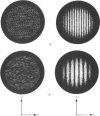Abstract
Adaptation to patterns of paired random dots produces loss of contrast sensitivity to sinusoidal luminance gratings oriented perpendicularly to the dot-pair direction. This adaptation loss is spatial frequency- and orientation-specific and varies with dot-pair separation in a manner predictable from the Fourier spectra of the stimuli and observed characteristics of the visual system. These results support the idea that the visual system acts as a periodicity analyzer with known restrictions and cannot be accounted for by a feature-detector model. When the bars of the test gratings are aligned in the dot-pair direction, there is no adaptational loss at any frequency despite the fact that the adaptation pattern contains significant spectral power at all frequencies in this orientation. This lack of adaptation may be due to inhibitory interactions among channels or to nonlinear effects within local receptive fields.
Full text
PDF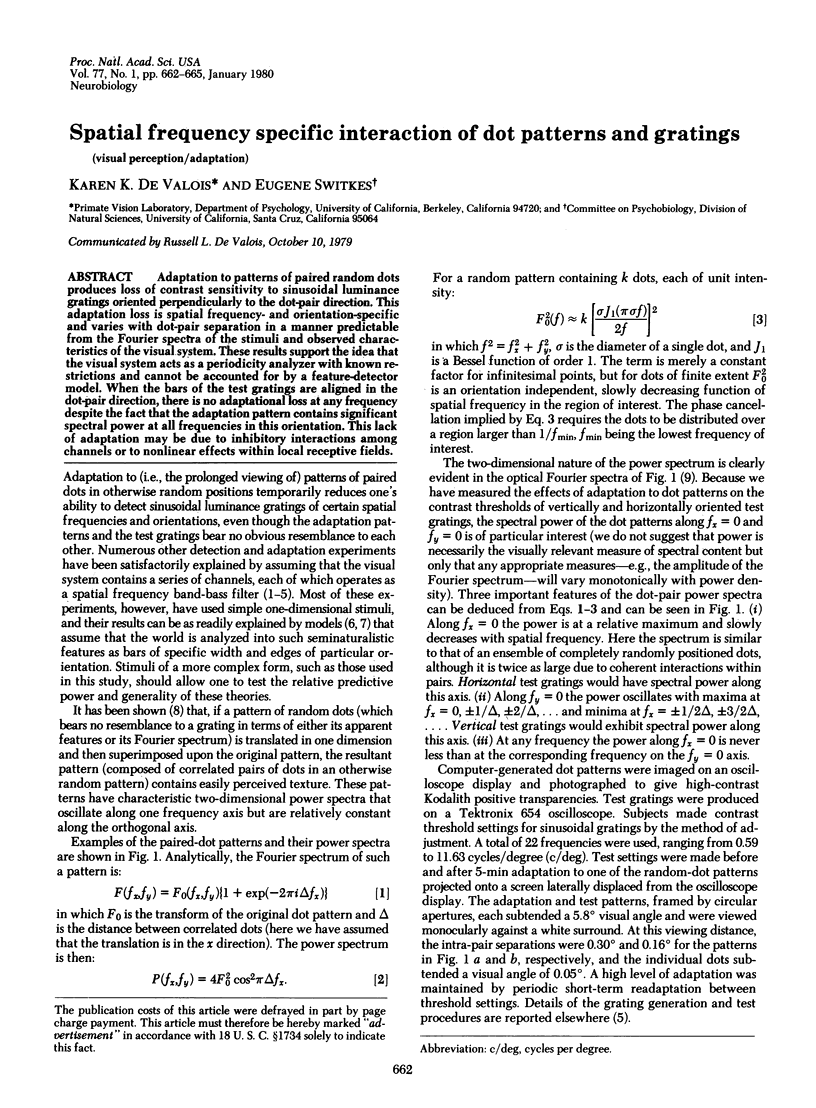
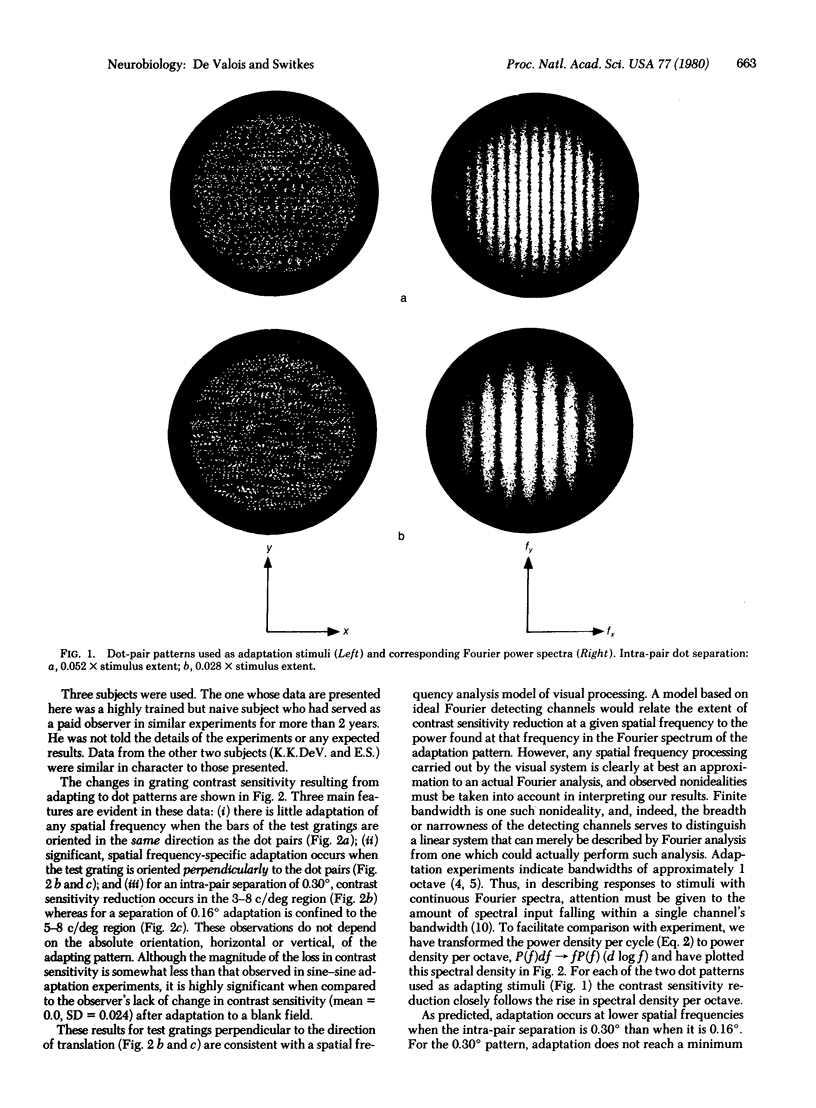
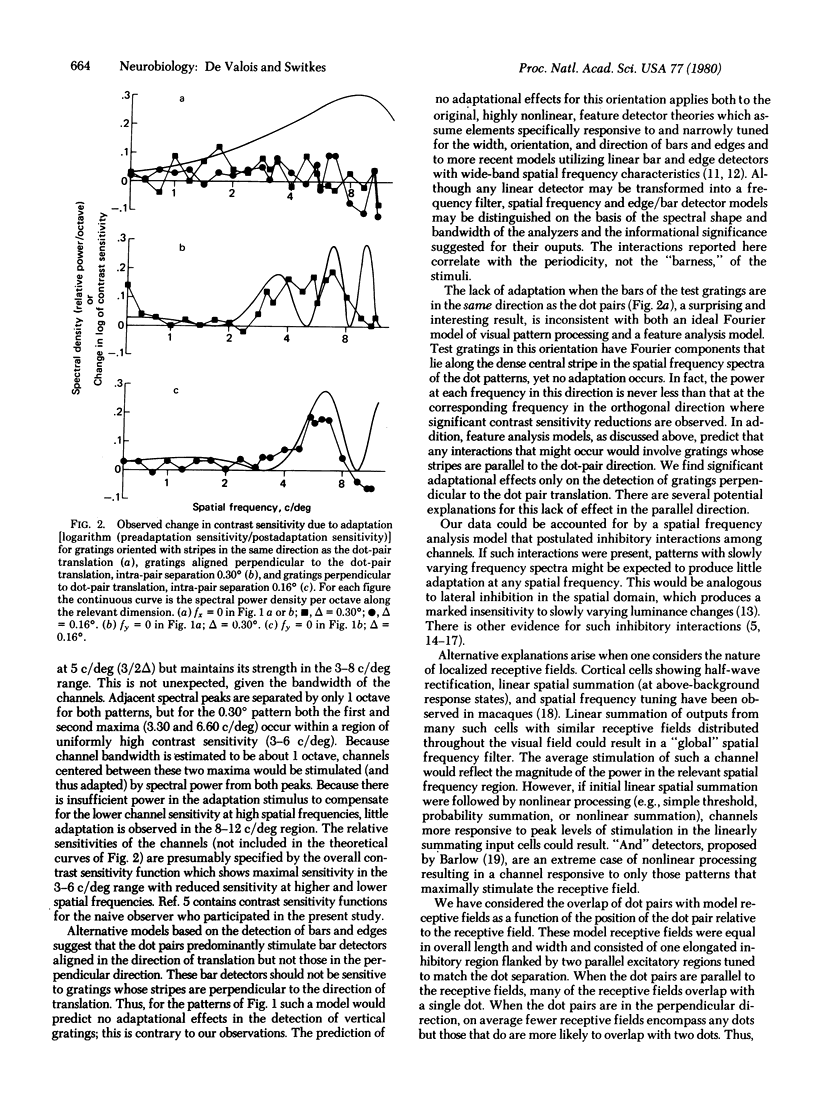
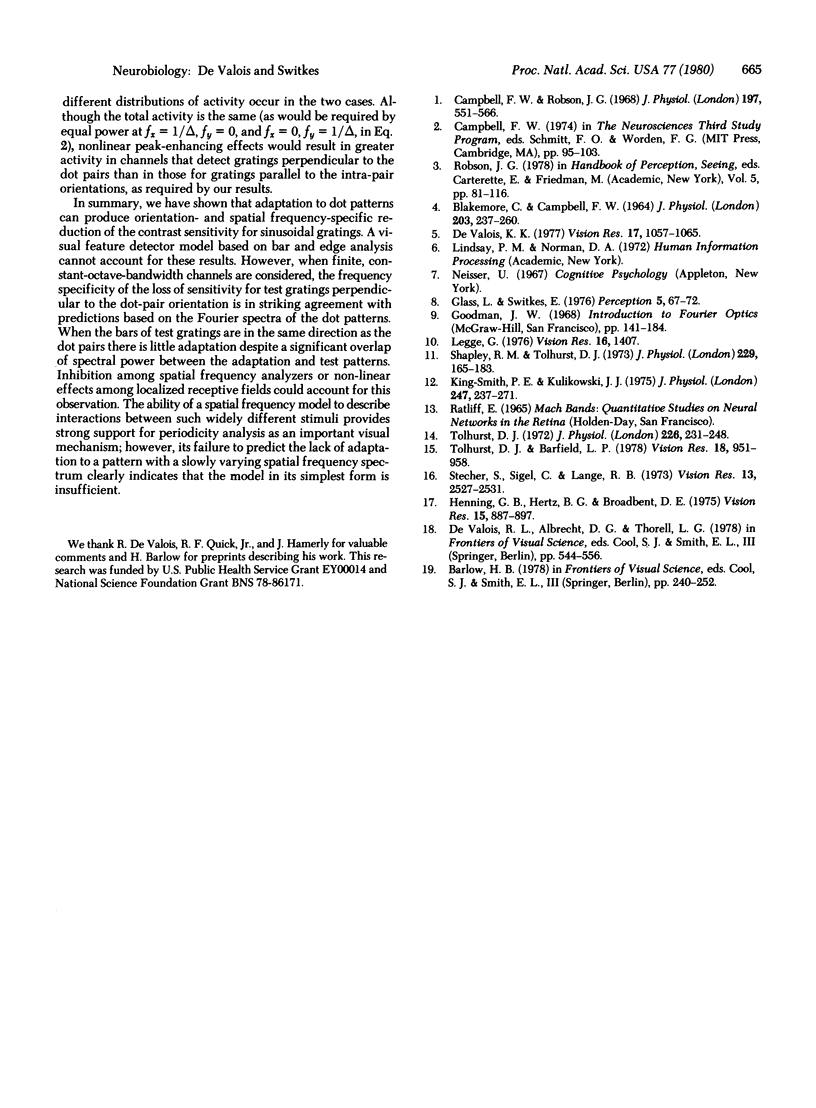
Images in this article
Selected References
These references are in PubMed. This may not be the complete list of references from this article.
- Blakemore C., Campbell F. W. On the existence of neurones in the human visual system selectively sensitive to the orientation and size of retinal images. J Physiol. 1969 Jul;203(1):237–260. doi: 10.1113/jphysiol.1969.sp008862. [DOI] [PMC free article] [PubMed] [Google Scholar]
- Campbell F. W., Robson J. G. Application of Fourier analysis to the visibility of gratings. J Physiol. 1968 Aug;197(3):551–566. doi: 10.1113/jphysiol.1968.sp008574. [DOI] [PMC free article] [PubMed] [Google Scholar]
- De Valois K. K. Spatial frequency adaptation can enhance contrast sensitivity. Vision Res. 1977;17(9):1057–1065. doi: 10.1016/0042-6989(77)90010-4. [DOI] [PubMed] [Google Scholar]
- Glass L., Switkes E. Pattern recognition in humans: correlations which cannot be perceived. Perception. 1976;5(1):67–72. doi: 10.1068/p050067. [DOI] [PubMed] [Google Scholar]
- Henning G. B., Hertz B. G., Broadbent D. E. Some experiments bearing on the hypothesis that the visual system analyses spatial patterns in independent bands of spatial frequency. Vision Res. 1975 Aug-Sep;15:887–897. doi: 10.1016/0042-6989(75)90228-x. [DOI] [PubMed] [Google Scholar]
- King-Smith P. E., Kulikowski J. J. The detection of gratings by independent activation of line detectors. J Physiol. 1975 May;247(2):237–271. doi: 10.1113/jphysiol.1975.sp010930. [DOI] [PMC free article] [PubMed] [Google Scholar]
- Legge G. E. Adaptation to a spatial impulse: implications for Fourier transform models of visual processing. Vision Res. 1976;16(12):1407–1418. doi: 10.1016/0042-6989(76)90160-7. [DOI] [PubMed] [Google Scholar]
- Shapley R. M., Tolhurst D. J. Edge detectors in human vision. J Physiol. 1973 Feb;229(1):165–183. doi: 10.1113/jphysiol.1973.sp010133. [DOI] [PMC free article] [PubMed] [Google Scholar]
- Stecher S., Sigel C., Lange R. V. Composite adaptation and spatial frequency interactions. Vision Res. 1973 Dec;13(12):2527–2531. doi: 10.1016/0042-6989(73)90249-6. [DOI] [PubMed] [Google Scholar]
- Tolhurst D. J. Adaptation to square-wave gratings: inhibition between spatial frequency channels in the human visual system. J Physiol. 1972 Oct;226(1):231–248. doi: 10.1113/jphysiol.1972.sp009982. [DOI] [PMC free article] [PubMed] [Google Scholar]
- Tolhurst D. J., Barfield L. P. Interactions between spatial frequency channels. Vision Res. 1978;18(8):951–958. doi: 10.1016/0042-6989(78)90023-8. [DOI] [PubMed] [Google Scholar]



